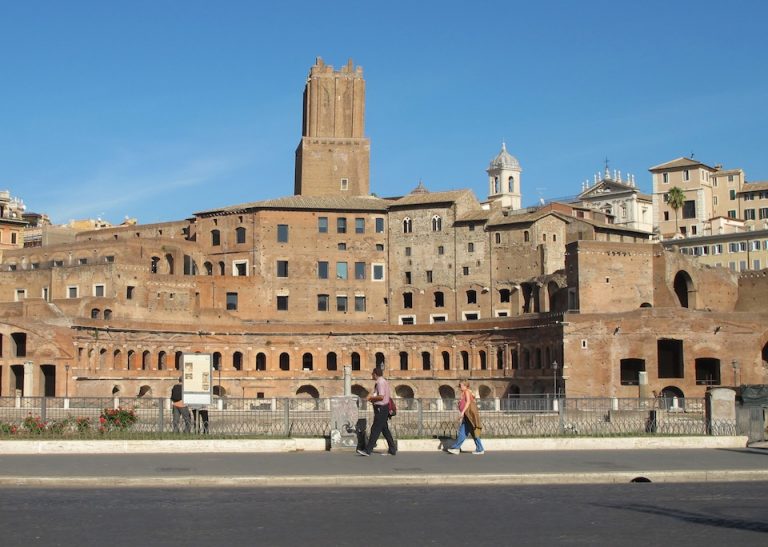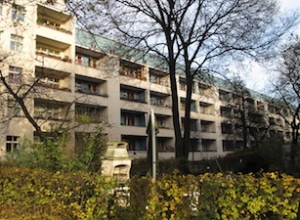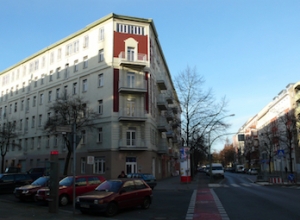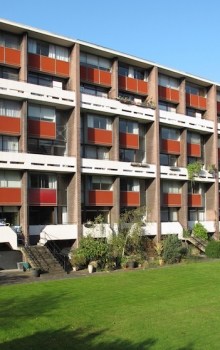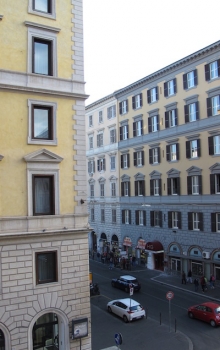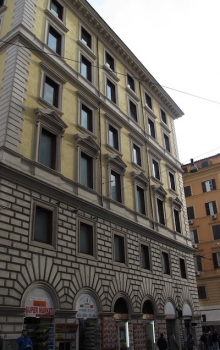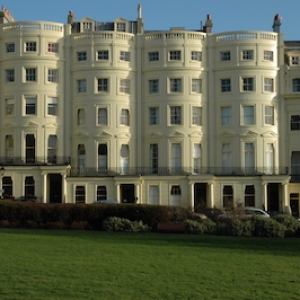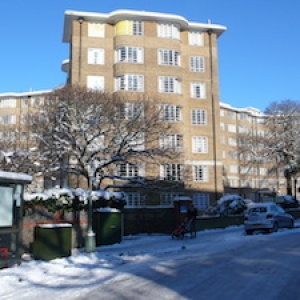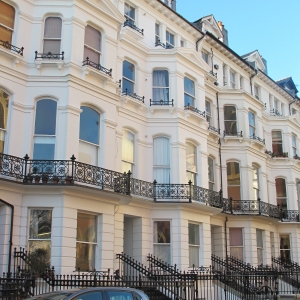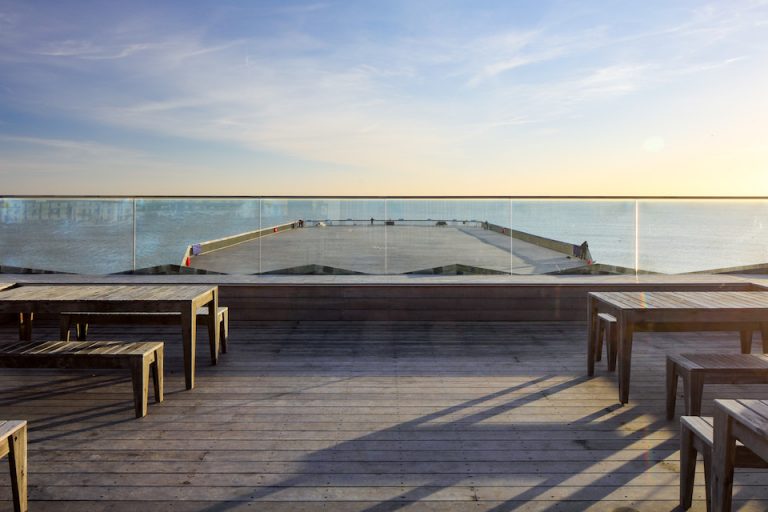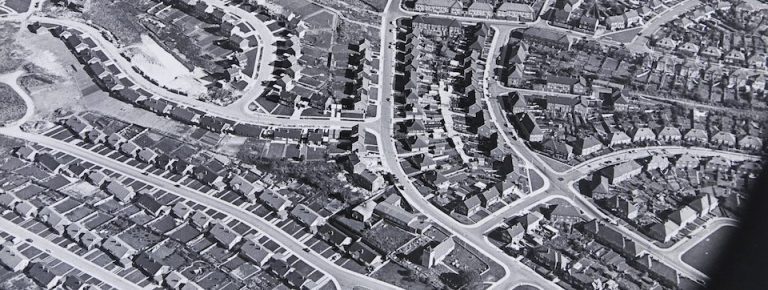The committee is sometimes asked why we advocate higher housing density for some proposed schemes. The answer has several elements - low density developments often lead to isolated communities with few local facilities and poor public transport. Low density new developments are a lost opportunity to address the urgent need for housing in Brighton and Hove, with all the attendant problems of homelessness.
Here David Robson traces the history and makes the case for medium rise housing.
The history of building upwards
In earlier times the heights of buildings were limited by our ability to build. They seldom exceeded three storeys and only monumental buildings reached above the general roofline. But as we became more skilled at making everyday buildings stand up, building heights were limited only by our willingness to climb stairs. When Rome became the first million city during the 3rd C. A.D. land shortage and congestion encouraged the construction of apartment buildings of up to six storeys, the maximum height to which Romans were prepared to climb.
The growth of cities: six storeys across Europe
Such heights were seldom matched during the Middle Ages, however, and it was only with the growth of cities during the 19th C. that height of residential buildings again began to increase. As cities grew, their physical area was limited by the reach of transport systems and, as a consequence, densities and building heights increased. In cities across Europe, such as Paris, Rome, Berlin and Vienna, six storey apartment blocks became the norm. Post-Haussmann Paris developed as a grid of boulevards lined with buildings of five or six storeys. A typical Parisian building would comprise a storage basement, a ground-floor given over to shops, a first floor of offices, three floors of apartments and an additional attic floor. Central Paris became one of the densest urban areas in the world, thanks to the consistent height and depth of its buildings combined with the relative narrowness of the intervening streets. And yet central Paris remains an attractive place in which to live and tourists still flock to enjoy the variety and liveliness of its street life.
Above: three buildings in Berlin from the 19th and early twentieth centuries
Below (l – r): 20th century London and 19th century Rome (2 images)
Housing density in the Regency period in Brighton
Brighton’s first high-rise buildings appeared already during the Regency. Houses at the north end of Brunswick Square, built during the 1820s, originally comprised a basement, a reception floor, a piano nobile, and three upper floors with an occasional extra attic. The building footprint was about 200 sqm. and a house with its basement and appendages might have had a total floor area of about 500 sqm. A typical plot occupied an area of about 250 sqm. and the net density was about 30 per hectare. However, these houses have since been so sub-divided as to produce a density of around 180 dwellings per hectare. Even when the area of the central garden is taken into account, the density is still more than 100 dwellings per hectare. This can be compared with suburban Brighton where densities of about 25 per hectare are the norm.
Technology takes us upwards
Two 19th C. innovations were responsible removing the cap on building height: the development of sophisticated steel construction and the invention of the mechanical lift. Nowhere was this more apparent than in late 19th C. Chicago where office and apartment buildings broke through the six-floor barrier and rose up to heights of twenty or more storeys. Today, the world’s tallest building, the Burj Khalifa in Dubai, rises 828 meters on 276 floors, while the Shard, the tallest building in the UK, rises a mere 309 meters on 95 floors.
Is there an upper limit?
Now, when building heights are no longer constrained by technology, by cost or by accessibility, we should ask ourselves, not what is possible, but what is desirable. Events such as the Twin Towers disaster and the Grenfell Tower fire have offered salutary reminders of the inherent risks of high-rise living – tall buildings are vulnerable to terrorist attack and to fire. In Hong Kong a friend lives on the 34th floor of a tower block. His view is fantastic, but the water in his fish tank gently slops from side to side as the building sways. And, after a severe typhoon, when the lifts were out of action for a week, he had to climb thirty-three flights of stairs, five-hundred-and-fifty steps, to reach his apartment.
Unfortunately, above certain limits, increases in height fail to produce commensurate increases in density. As buildings grow taller they require more land around their base and greater distances between them. My own studies suggest that there are diminishing gains when heights rise above ten storeys, and often no gains at all above twenty storeys
An example in Hove
I live in Furze Croft, a seven-storey block of flats in Hove. Our block contains 138 apartments of varying sizes and occupies an area of 9,000 sqm (less than one hectare), giving a density of about 150 dwellings per hectare. The total building area is about 11,000 sqm. and the building footprint covers 1,500 sqm. (i.e. about 16% of the site). Residents all own a small basement storage area and enjoy the use of over 4,000 sqm of shared gardens.
Brunswick Square, Furze Croft and St Michael’s Place
In Furze Croft, every flat has a visual link with the ground: lower flats see shrubberies and lawns, mid-height flats look into the trees, upper flats look across the tree tops towards the horizon. Each block has two lifts. However, if both are out of order simultaneously, the walk down to the ground is not impossible. There is a communal heating system and residents benefit from communal maintenance and security. The block requires less infrastructure than conventional housing – the entire street frontage is 100 meters, equivalent to 60 centimetres per apartment. The only drawback is that we don’t have balconies: a room-sized balcony has become the norm in countries like Germany and Switzerland and is an essential prerequisite of successful apartment living.
I’m not suggesting that Furze Croft is a paragon. It is one of a number of apartment blocks in the City, built between the Wars, that seem to offer a civilised way to build much needed homes at higher densities when land is in short supply.
Top image: Rome, Trajan's Market
All images by David Robson.


